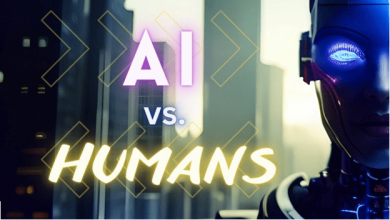How Tech Transformation Shapes the Way We Live Today

Have you ever thought about how much of your daily life depends on technology without you even noticing? The phone you scroll first thing in the morning, the car that reminds you when to brake, the wristwatch that nags you to stand up—all of it reflects the way technology has slipped into the most ordinary corners of life. Tech transformation is not something that happens in the background. It shapes how we eat, shop, work, and even remember our own past.
The pace is relentless. Artificial intelligence drafts emails, smart fridges track groceries, and apps can now schedule entire vacations with a swipe. At the same time, cultural debates about screen time, privacy, and sustainability show that these advances aren’t neutral. They change habits, values, and relationships. In this blog, we will share how tech transformation touches daily life, why it matters for the way we interact with the world, and how it connects even to something as simple as the memories we try to preserve.
Technology as a Bridge Between Generations
One of the most striking things about technology today is the way it connects generations. Think about how families share moments now compared to a few decades ago. Grandparents once stored memories in shoeboxes of photographs or reels of film. Today, parents post baby pictures to cloud albums before the child even leaves the hospital. That shift is not just about convenience. It’s about how culture understands memory and permanence.
The move from analog to digital formats is a perfect example. Converting cine film to digital has become common for families who want to hold onto home movies without worrying about film reels decaying in the attic. What was once fragile and locked to specific equipment is now portable and easy to share. A wedding video shot in the 1970s can now be emailed, streamed, or uploaded to social media in seconds. The transformation isn’t just about saving old footage—it’s about making sure stories survive in a form future generations can actually access.
This bridge-building effect is part of a larger truth: technology changes how families and communities communicate across time. Without it, cultural memories risk being forgotten. With it, the same events become part of ongoing conversations. Tech transformation allows different generations to connect over shared histories while living in very different realities.
The Convenience Revolution
Another way technology reshapes daily life is through convenience. From ordering groceries online to checking into flights with a QR code, people expect less friction in everyday tasks. Businesses know this and design tools that shave seconds or minutes off processes that once took hours.
But convenience is not always harmless. It can shift expectations so much that waiting in line feels unbearable. In some cases, the push for convenience changes entire industries. Streaming, for example, didn’t just make it easier to watch movies—it upended movie theaters, cable television, and even how directors think about storytelling. The same goes for ride-hailing apps, which didn’t just make transportation easier but reshaped the gig economy and urban planning.
For individuals, the convenience revolution can be both empowering and exhausting. People love the control of having services at their fingertips, but they also feel trapped by the constant expectation of instant responses. Convenience has become a currency, one that defines not only how we spend but how we value time itself.
The Blurred Line Between Work and Life
Technology has also transformed how we think about work. Remote jobs, video meetings, and collaboration platforms mean that offices are no longer physical places but digital networks. This flexibility has benefits, like making careers more accessible for people who can’t relocate or commute. But it also blurs boundaries. Checking emails at midnight or answering Slack messages during dinner shows how porous the line between work and personal life has become.
This isn’t just about personal stress. It reflects larger societal changes. Whole industries now measure productivity in terms of digital availability rather than output. That creates new challenges for mental health, labor laws, and education. Students preparing for future careers are being trained to navigate hybrid environments that blend physical and digital spaces. Tech transformation doesn’t just change what we do—it redefines what counts as “being at work.”
The Data Exchange We All Participate In
Almost every digital interaction comes with a hidden transaction: your data for their service. Social media platforms, fitness apps, and even online shopping sites rely on collecting and analyzing data to deliver personalized experiences. People trade privacy for convenience, often without realizing the long-term implications.
The societal consequences of this data exchange are significant. On the one hand, personalization makes life easier and more relevant. On the other hand, it creates risks around surveillance, manipulation, and inequality. Recent debates about data security and artificial intelligence show just how much weight this issue carries.
On an individual level, the key is awareness. Tech users need to understand what they’re giving up when they click “accept.” In education, this means teaching digital literacy not just as a technical skill but as a civic responsibility. The next generation will need to navigate the balance between privacy and personalization with far more nuance than the current one.
When Tech Shapes Culture
Perhaps the most fascinating impact of tech transformation is cultural. Fashion trends are influenced by algorithms. Music charts reflect TikTok virality more than radio play. Political movements find momentum through hashtags before they hit mainstream media. Culture no longer moves at the pace of traditional institutions. It moves at the pace of the internet.
This acceleration means that cultural memory itself feels shorter. Trends rise and fall in weeks. Memes become outdated in days. Yet, at the same time, tech allows culture to archive itself with unprecedented depth. A song that defined one summer can be rediscovered decades later with a few keystrokes. That duality—fast-moving but deeply stored—defines how culture now evolves.
For individuals, this creates both opportunities and challenges. It’s easier than ever to participate in cultural production, whether through a YouTube channel or a viral tweet. But it’s also harder to stand out. Tech democratizes creation while intensifying competition.
The Human Side of Tech Transformation
For all the talk of machines and algorithms, tech transformation ultimately comes down to people. How we adopt, adapt, and resist new technologies determines their impact. A family digitizing home movies, a small business using online tools to survive economic shifts, or a student navigating remote classes—these are the real stories of transformation.
The irony is that while technology often promises simplicity, it can make life more complicated. Devices need constant updates. Apps change interfaces overnight. New tools arrive before we’ve mastered the old ones. This tension between simplification and complexity is part of the ongoing negotiation between humans and their tools.
The challenge moving forward is to use tech transformation with intention. That means choosing tools that add value rather than simply adopting the newest thing. It means teaching digital literacy so people can evaluate what tech does for them rather than just what it does to them. And it means remembering that the purpose of technology isn’t just efficiency or profit. It’s to enhance the human experience in ways that feel meaningful.
Tech transformation shapes the way we live today in ways both obvious and invisible. It changes how we remember, how we work, how we connect, and even how we define culture itself. It’s not just a backdrop to modern life. It is the script, the stage, and often the director. The question each of us faces is not whether technology will keep transforming our lives, but how consciously we will choose to live within that transformation.



